Austin Community College – Rio Grande Campus
Nestled in Austin’s urban core, ACC Rio Grande represents an educational legacy, having served the community for over a century. The overarching challenge was to transform a 100-year-old building into a state-of-the-art learning hub that enhances occupant well-being and comfort through sustainable building practices, while preserving its historical integrity.
The building, constructed in two phases (1916 and 1926), revealed unexpected differences in materials during renovation. The 1916 structure features durable double-wythe mass masonry walls, while the 1926 addition, likely a cost-saving measure, used hollow clay tile with a brick veneer. Removing windows exposed open clay tile cores at the jambs, complicating the anchorage for new windows. To address this, a forensic engineer recommended replacing sections of clay tile at the jambs with reinforced CMU while preserving the exterior brick veneer, ensuring structurally sound supports for the new windows.
Exploratory demolition uncovered further surprises. Original 1916 drawings suggested load-bearing masonry walls and wood framing, but the building was actually a concrete frame with “leave-in-place” metal pan joist forming. This discovery allowed for the removal of all interior walls, enabling a new, efficient floor plan to support the updated educational program. The concrete frame also mitigated fire rating concerns associated with wood framing.
Amid the construction process, remnants of the building’s history emerged: old chalkboards with lessons still written, a forgotten student mural, and artifacts like ornamental railing sections and auditorium seats. While not all items could be salvaged, the design incorporates a history niche displaying these elements alongside historic photos and the original school clock, preserving the building’s legacy.
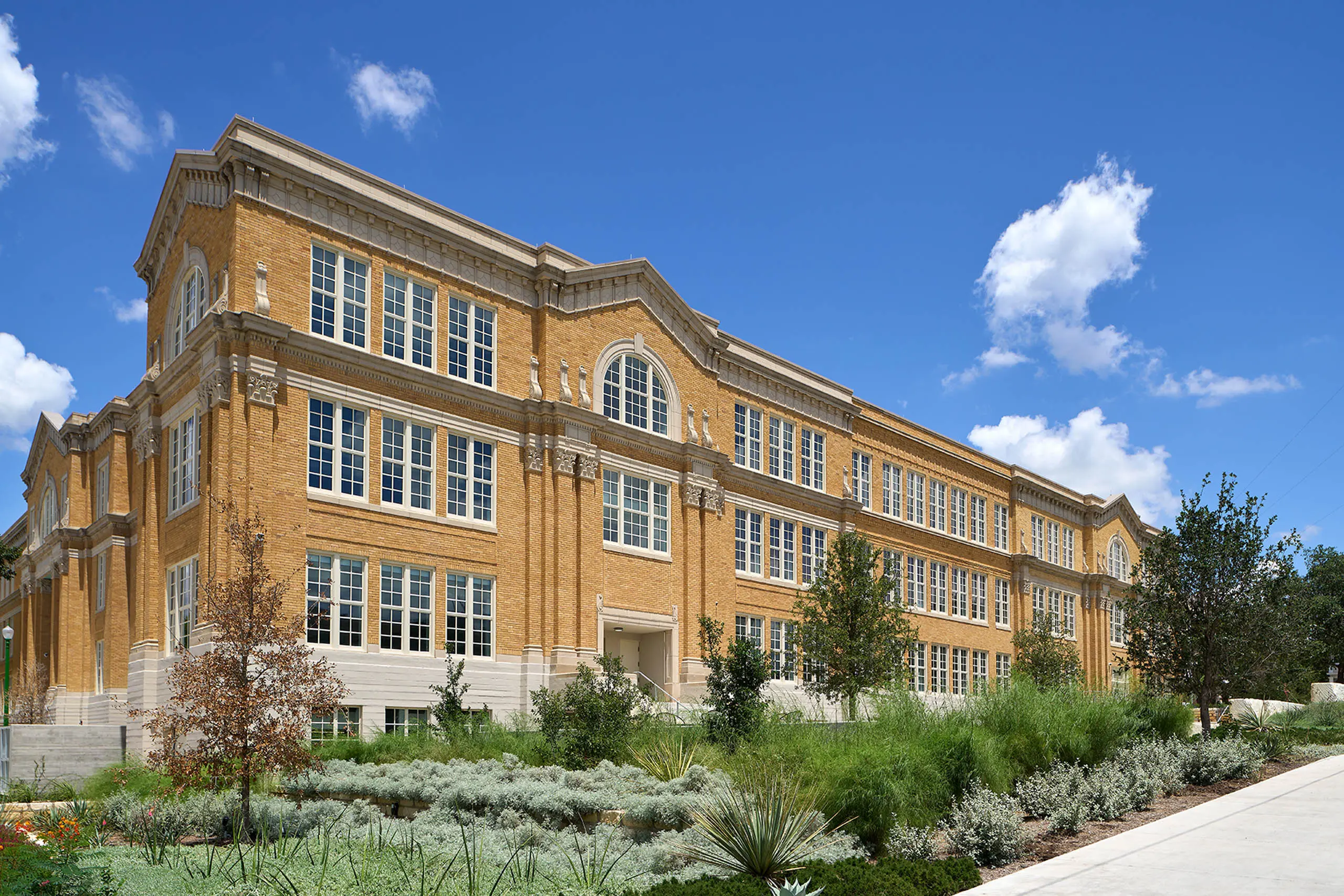
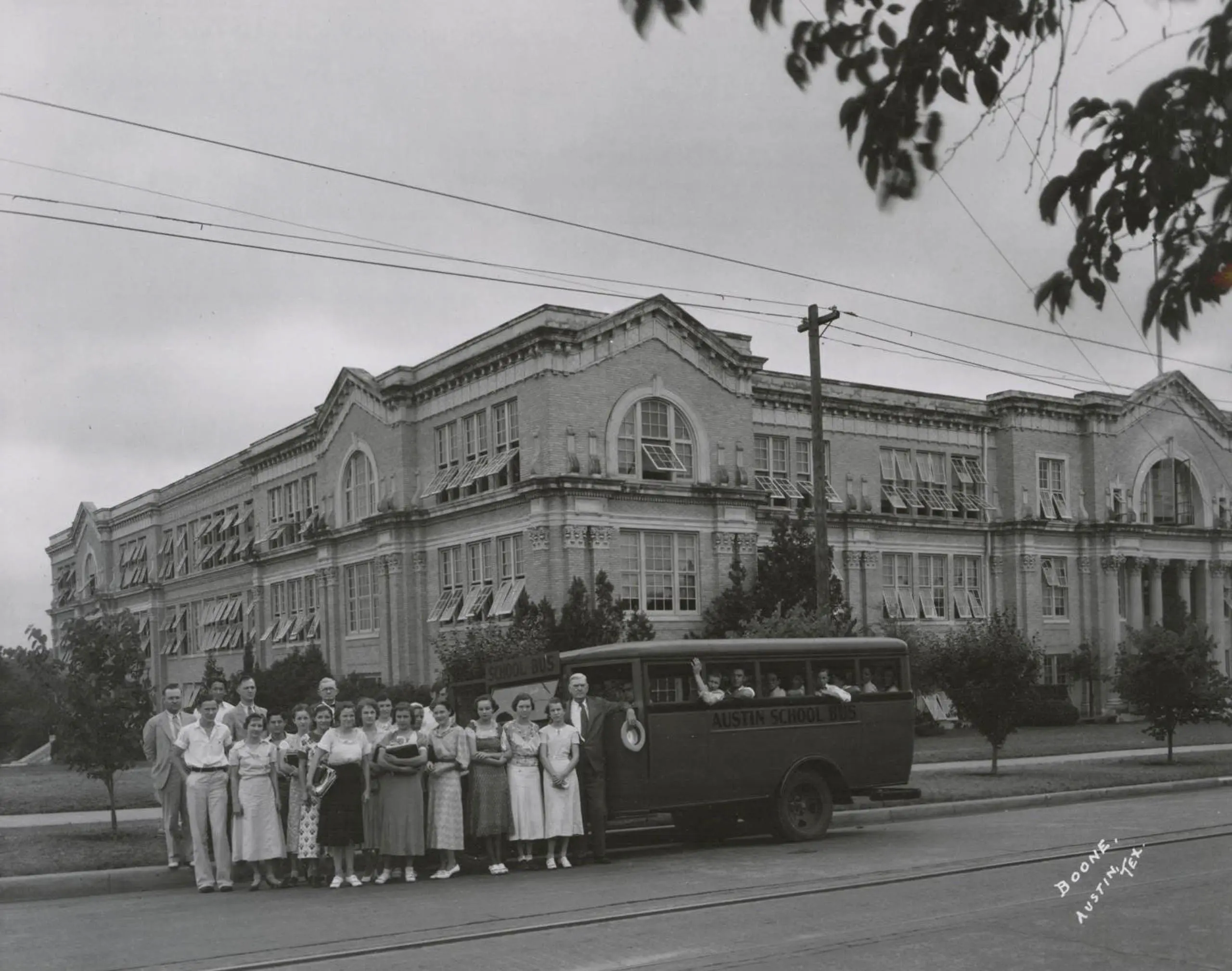
The Rio Grande campus has served as an educational center in Austin for over a century, originally as the John T. Allan High School and later as the flagship for Austin Community College.
The south side of the building was excavated down to the basement level to provide enhanced handicap accessibility and create a substantial sunken court with terraced seating for programmed events or simply to allow a place for students to gather outside.
Before
After
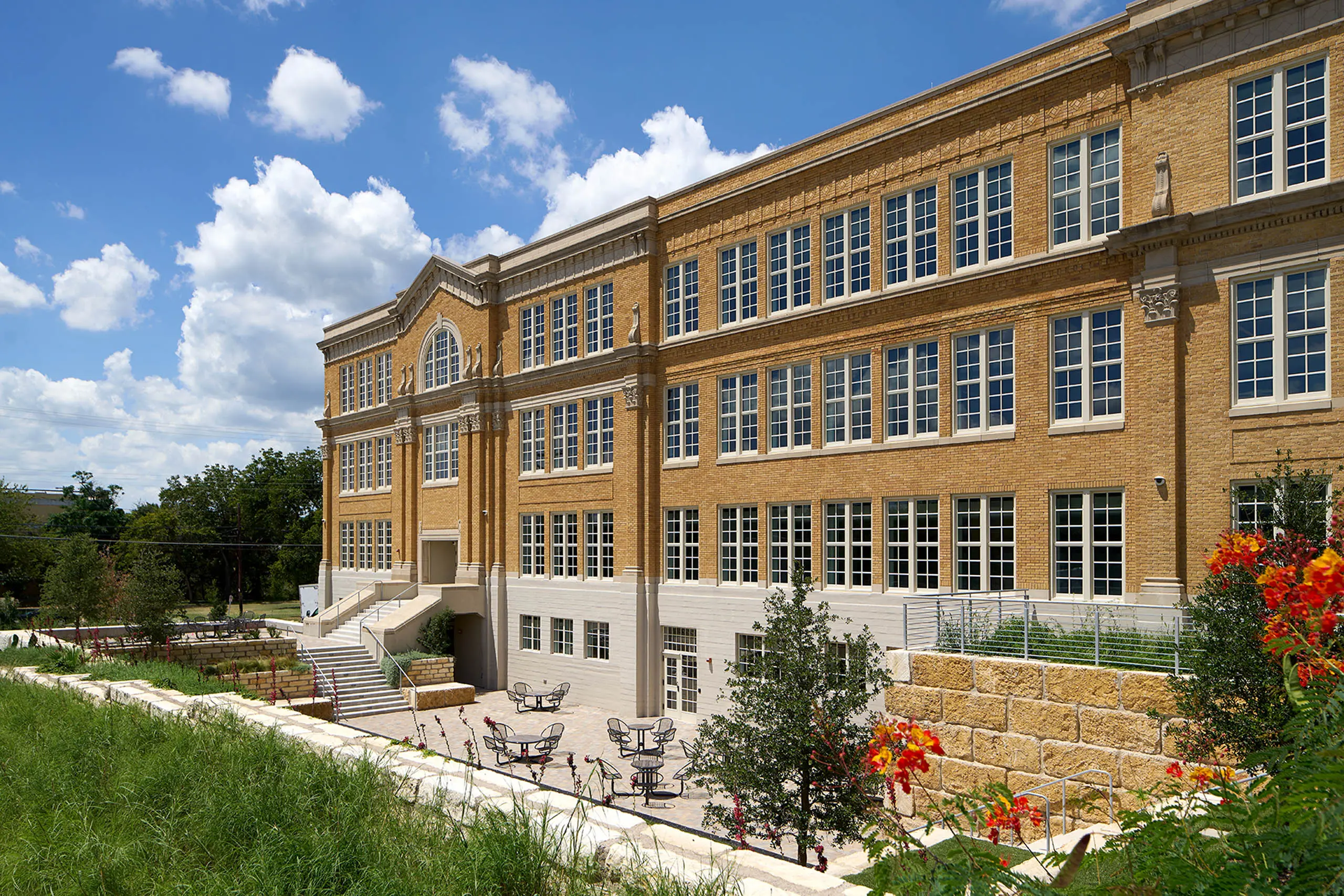
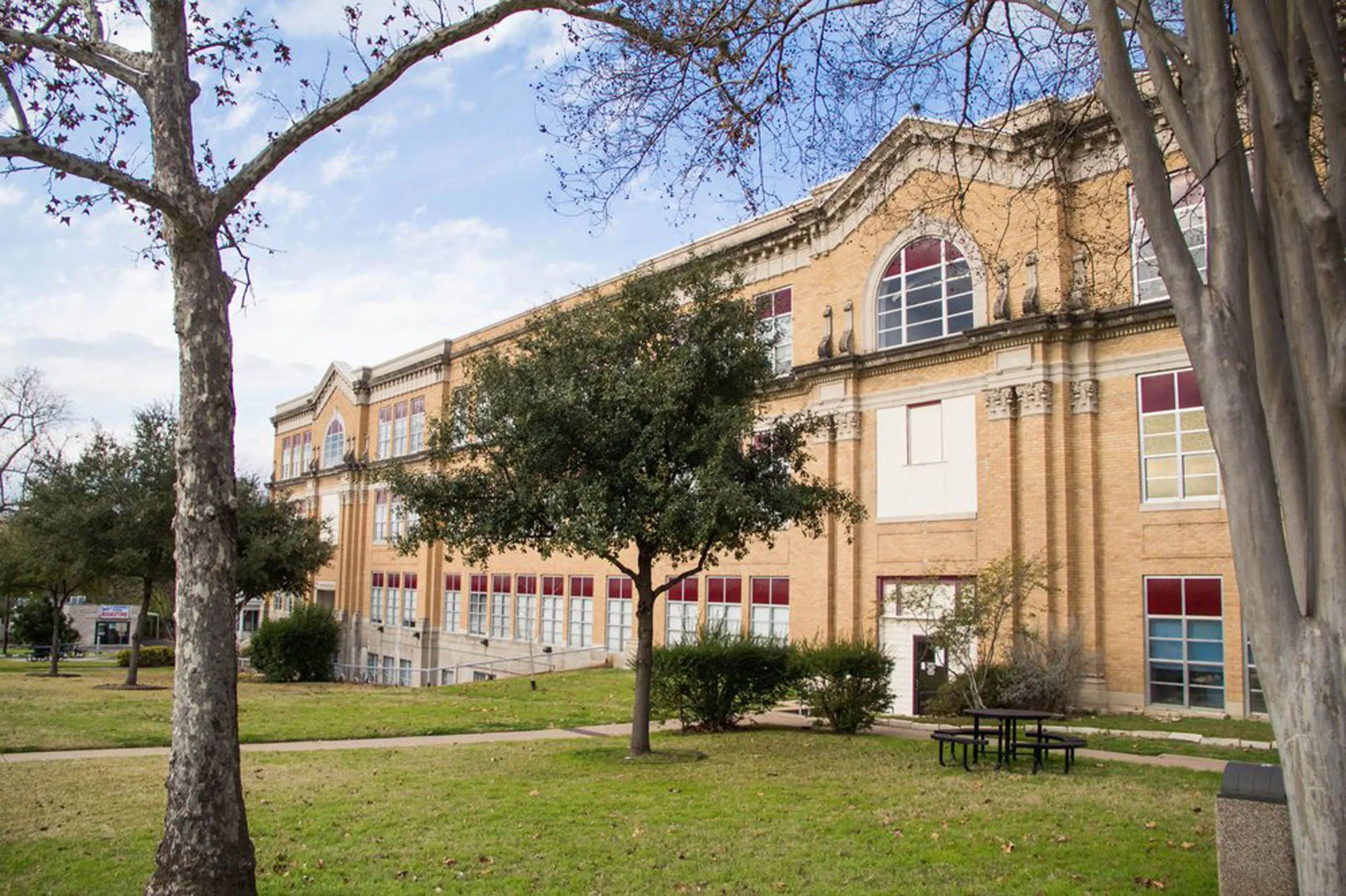
This excavation created an accessible entry along 12th Street (taking the total from one to four) and introduced light and function to a previously land-locked, neglected basement space.
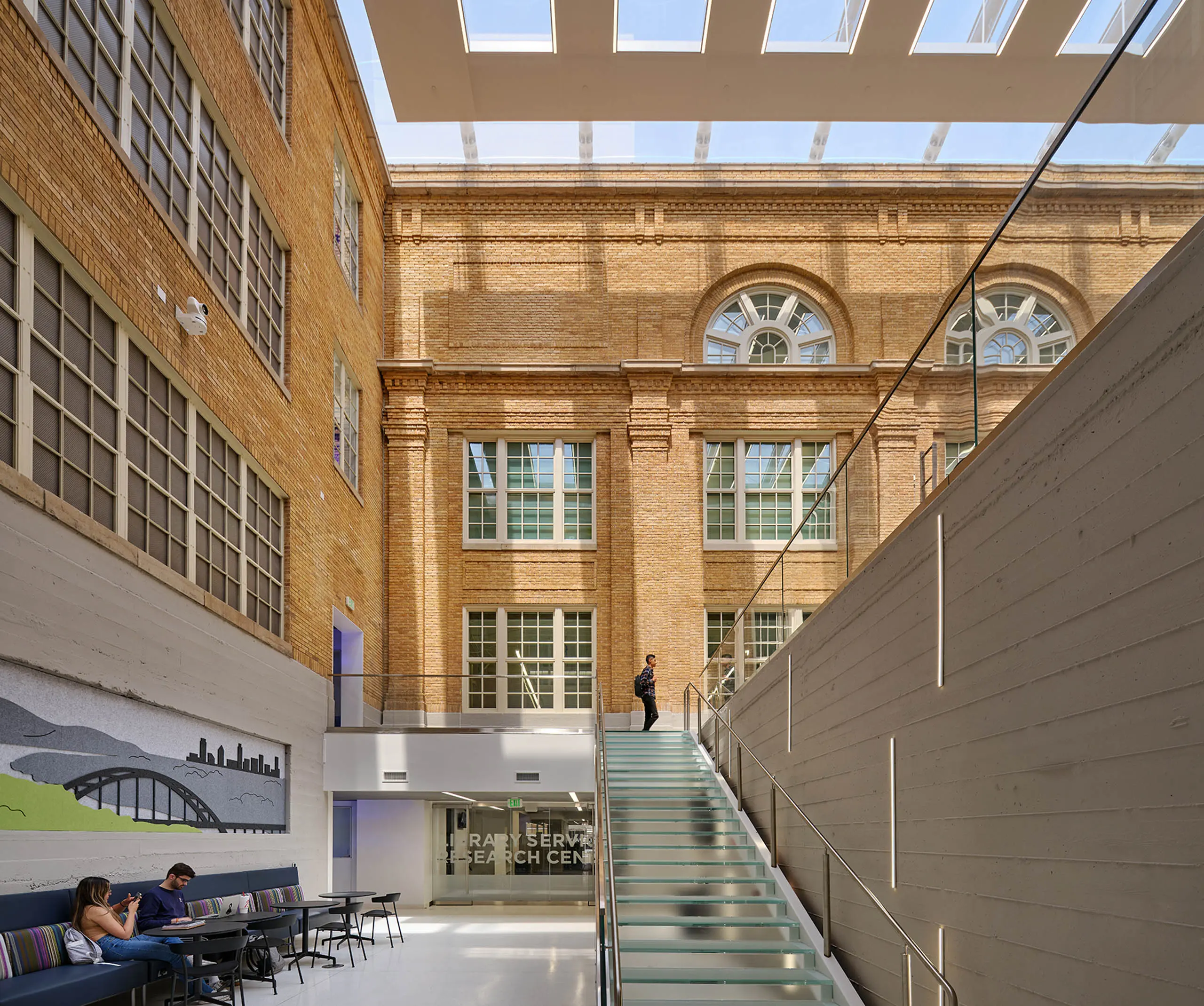
The design encloses the two existing exterior courtyards to create sheltered light courts, with one intended for use as a commons area for studying and relaxing, and a flexible space that can be configured for group gatherings.
Before
After
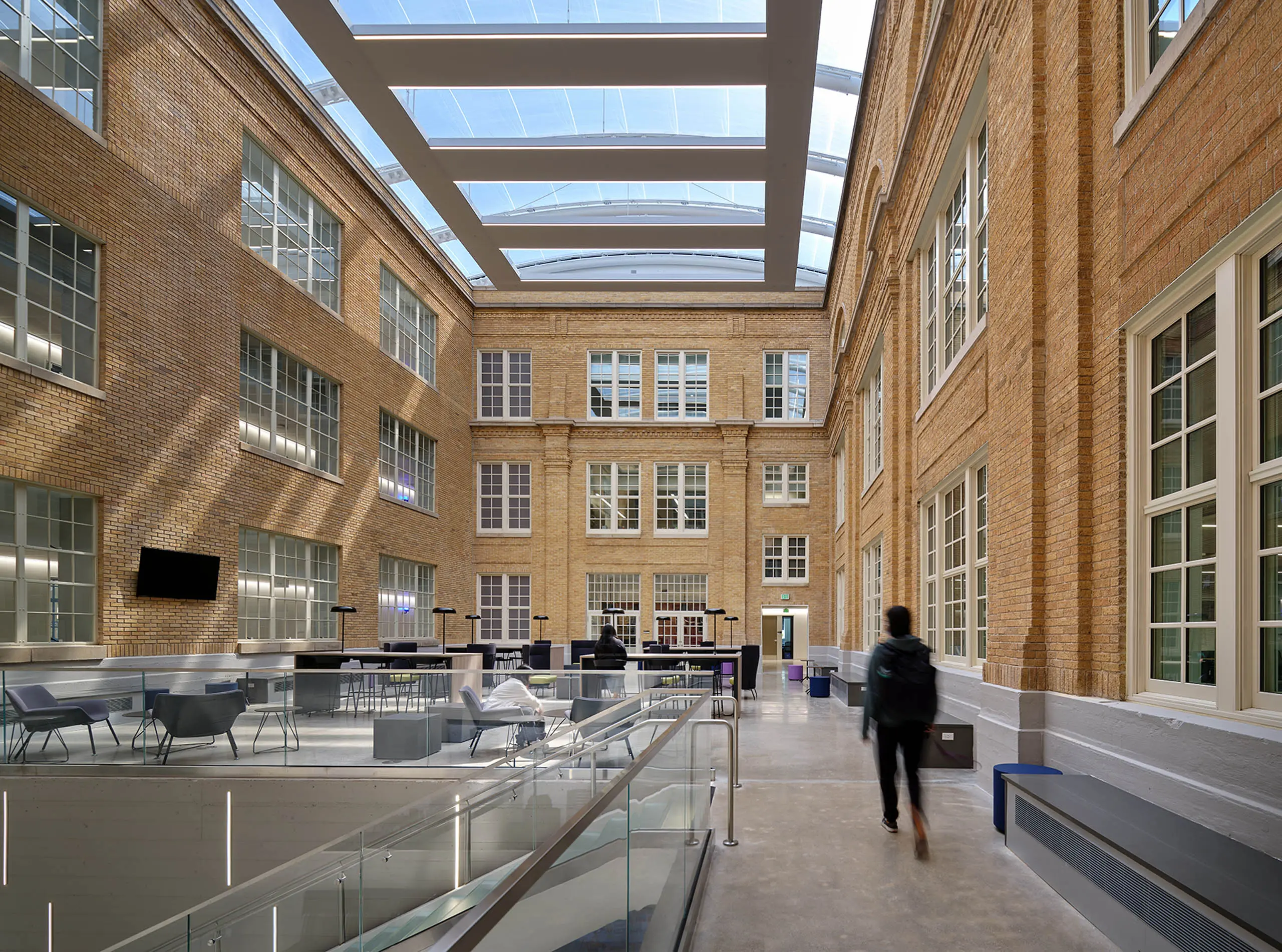
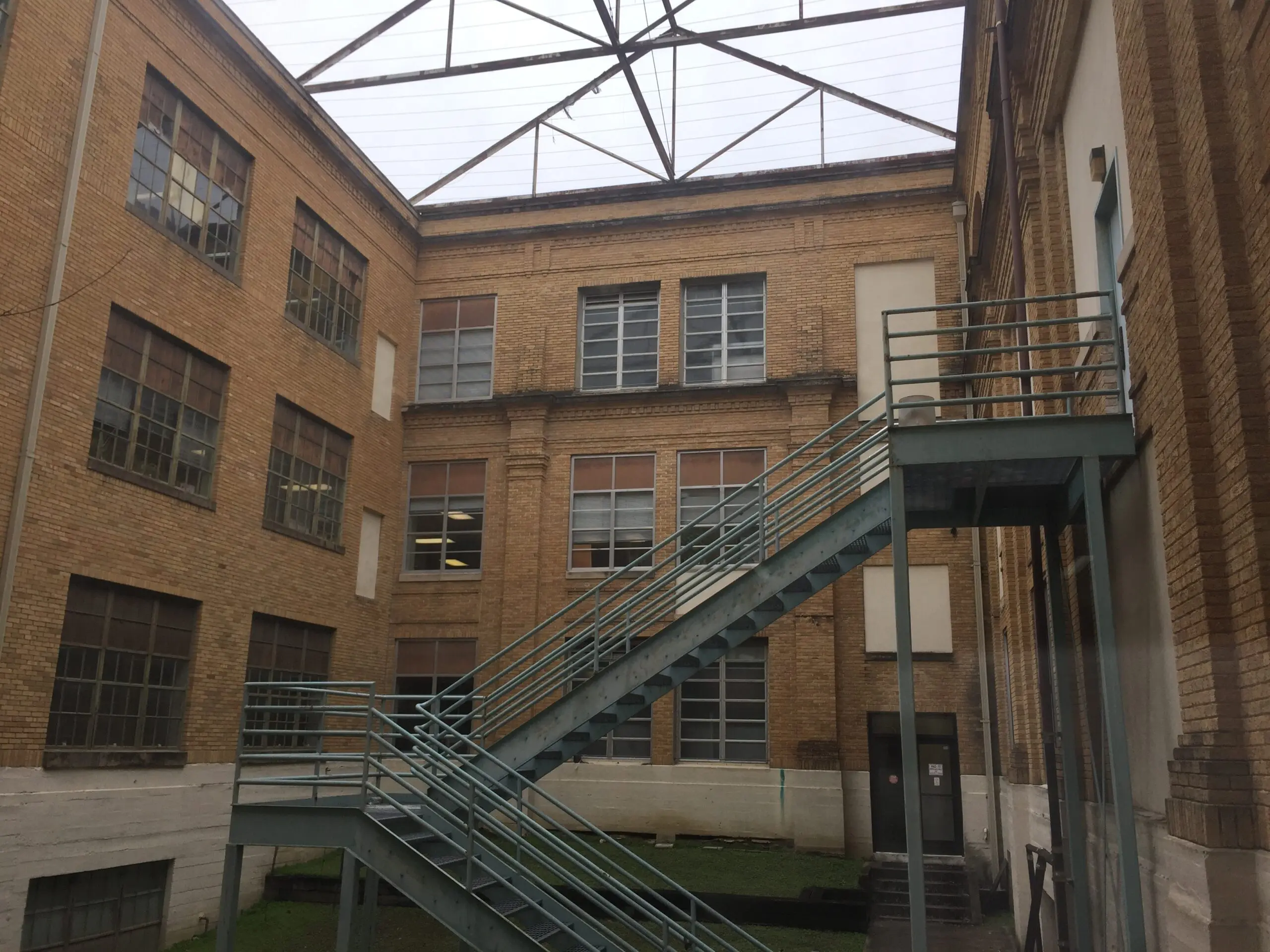
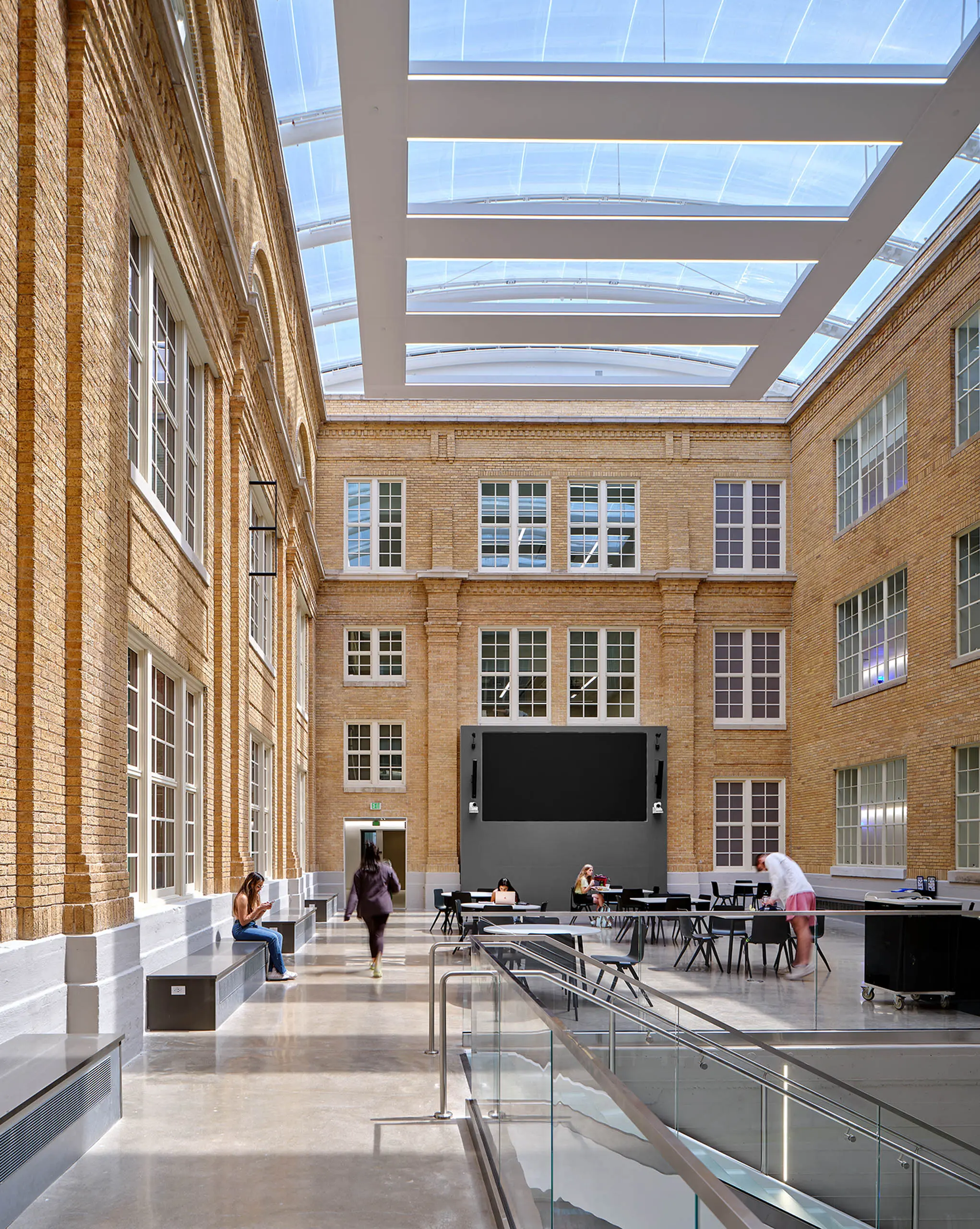
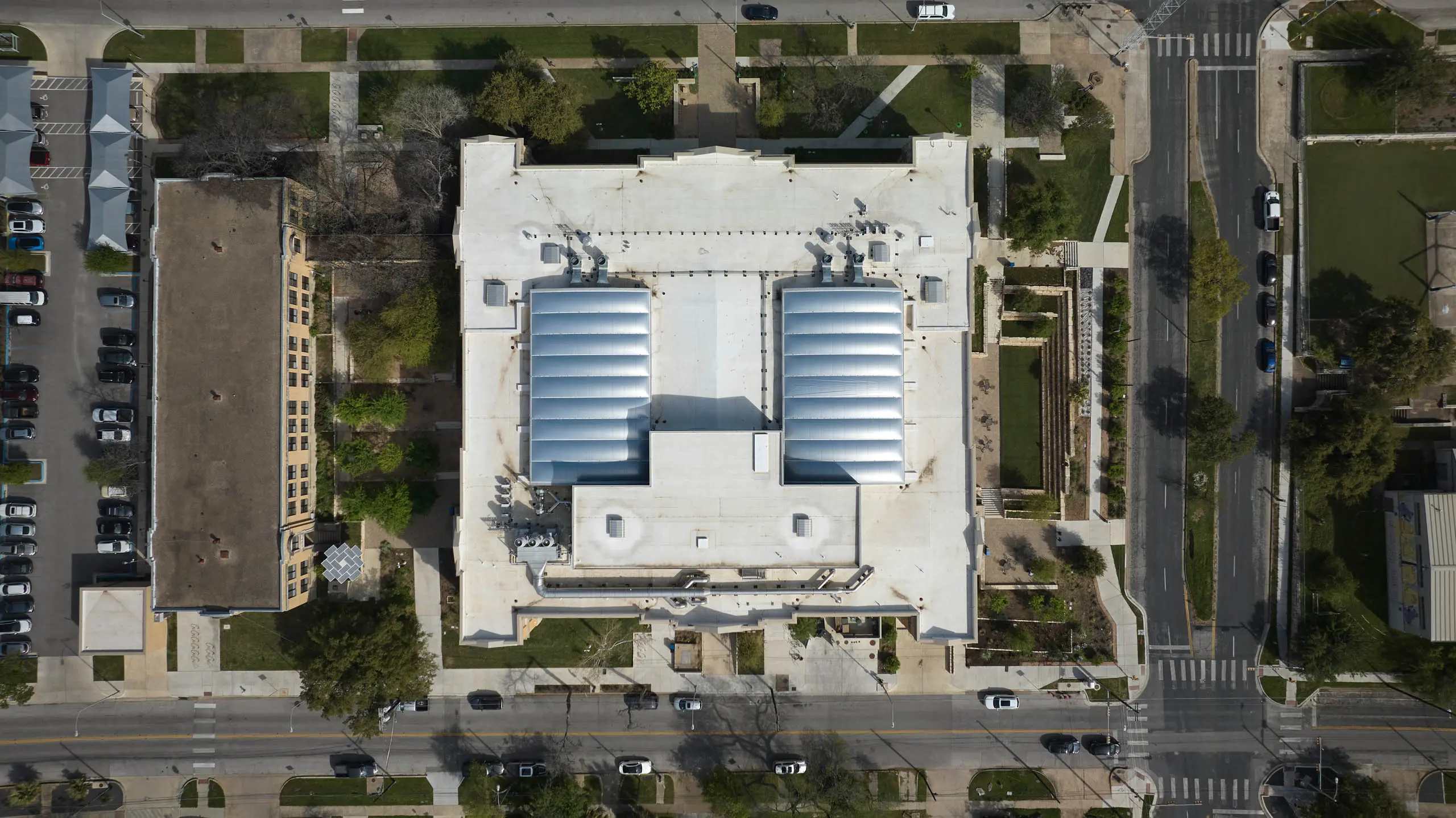
The architects selected a lightweight plastic polymer roofing system – Ethylene Tetra Fluoro Ethylene, or EFTE – that provides shelter from the elements, controls daylight, and spans the opening without the need for any major structures.
Before
After
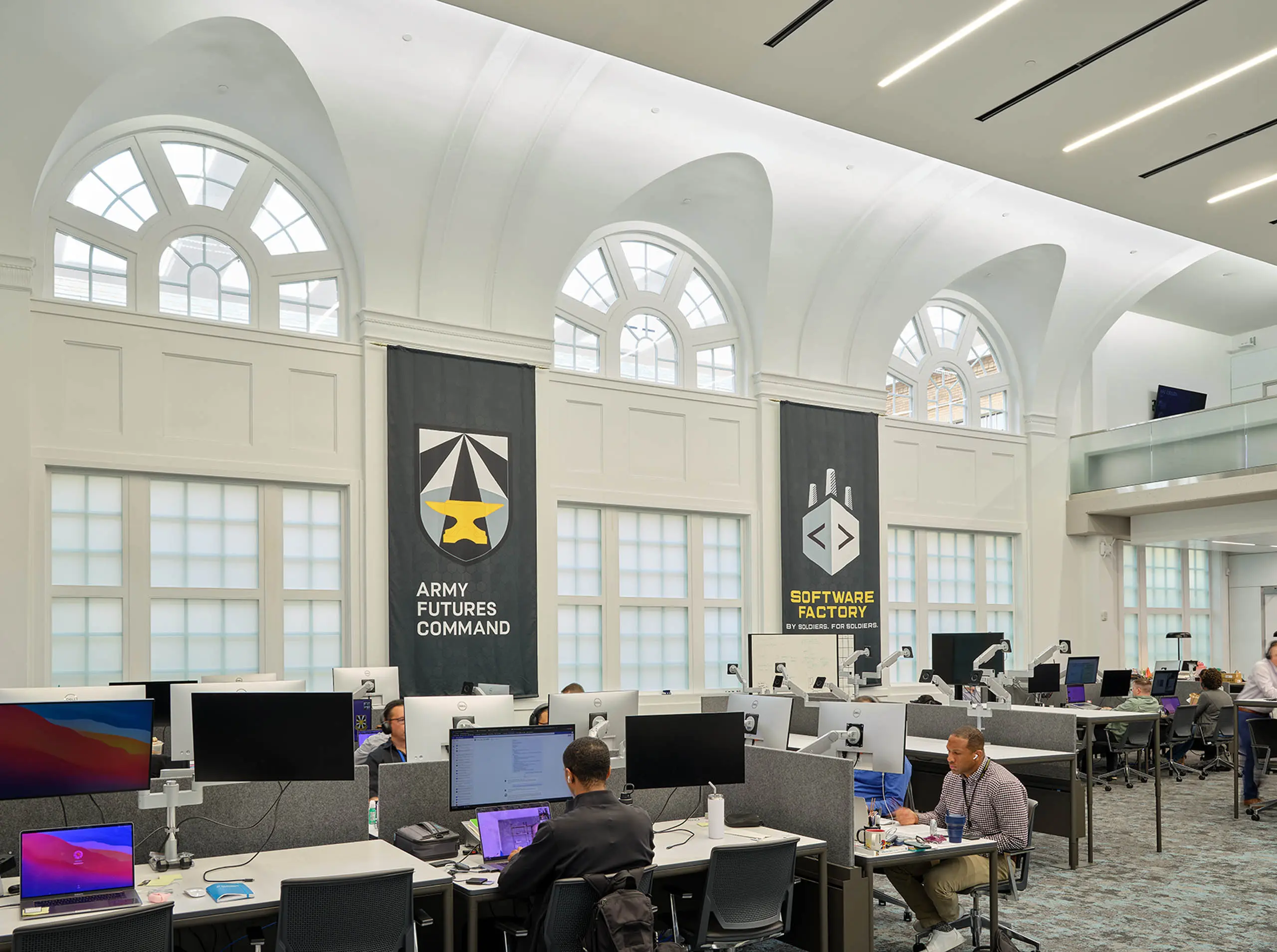
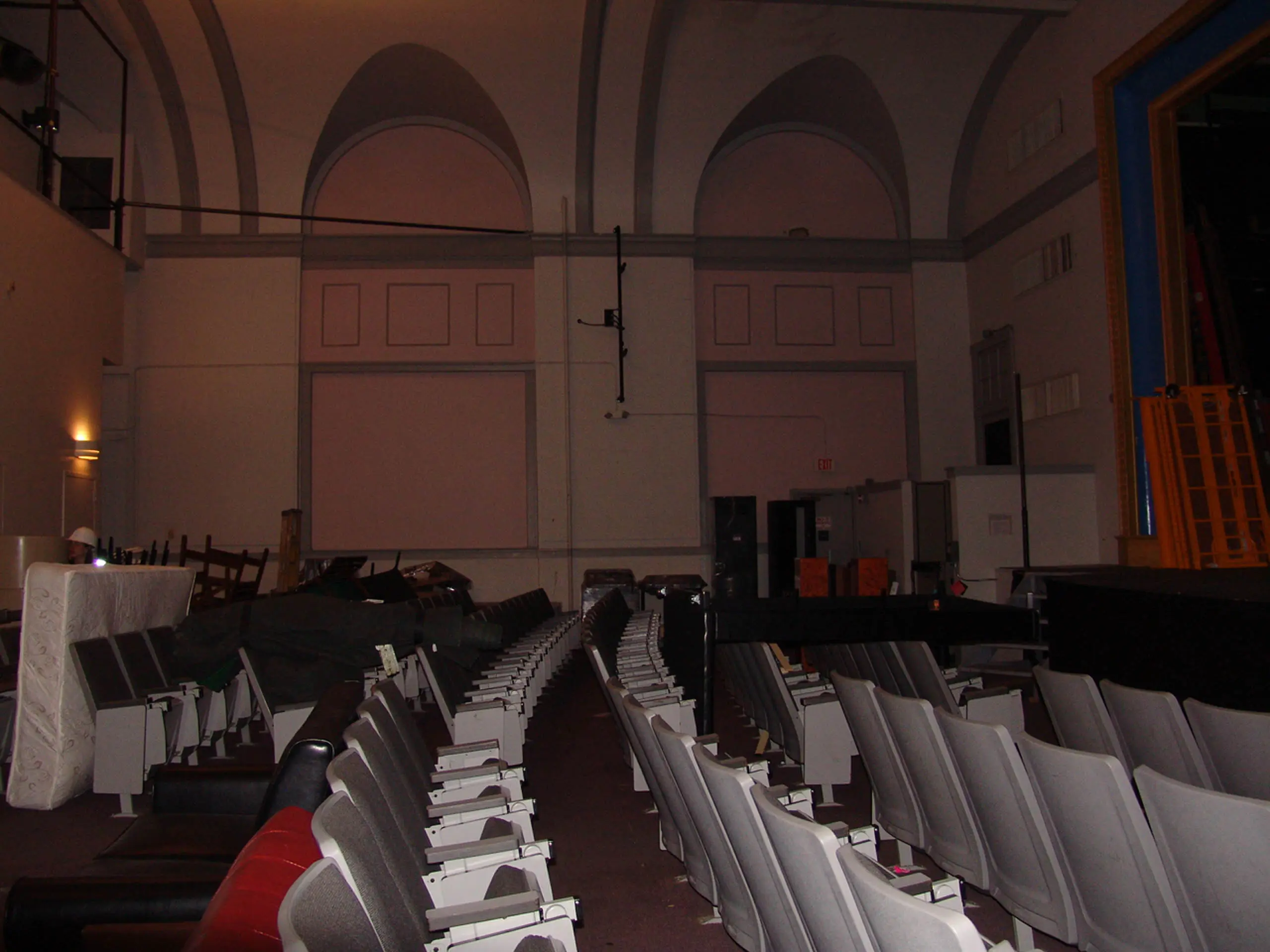
The renovation transformed an unused auditorium into the Army Futures Command’s Software Factory at ACC. Building on the college’s Computer Science and IT programs, the facility offers specialized training in emerging technologies like data science and AI.
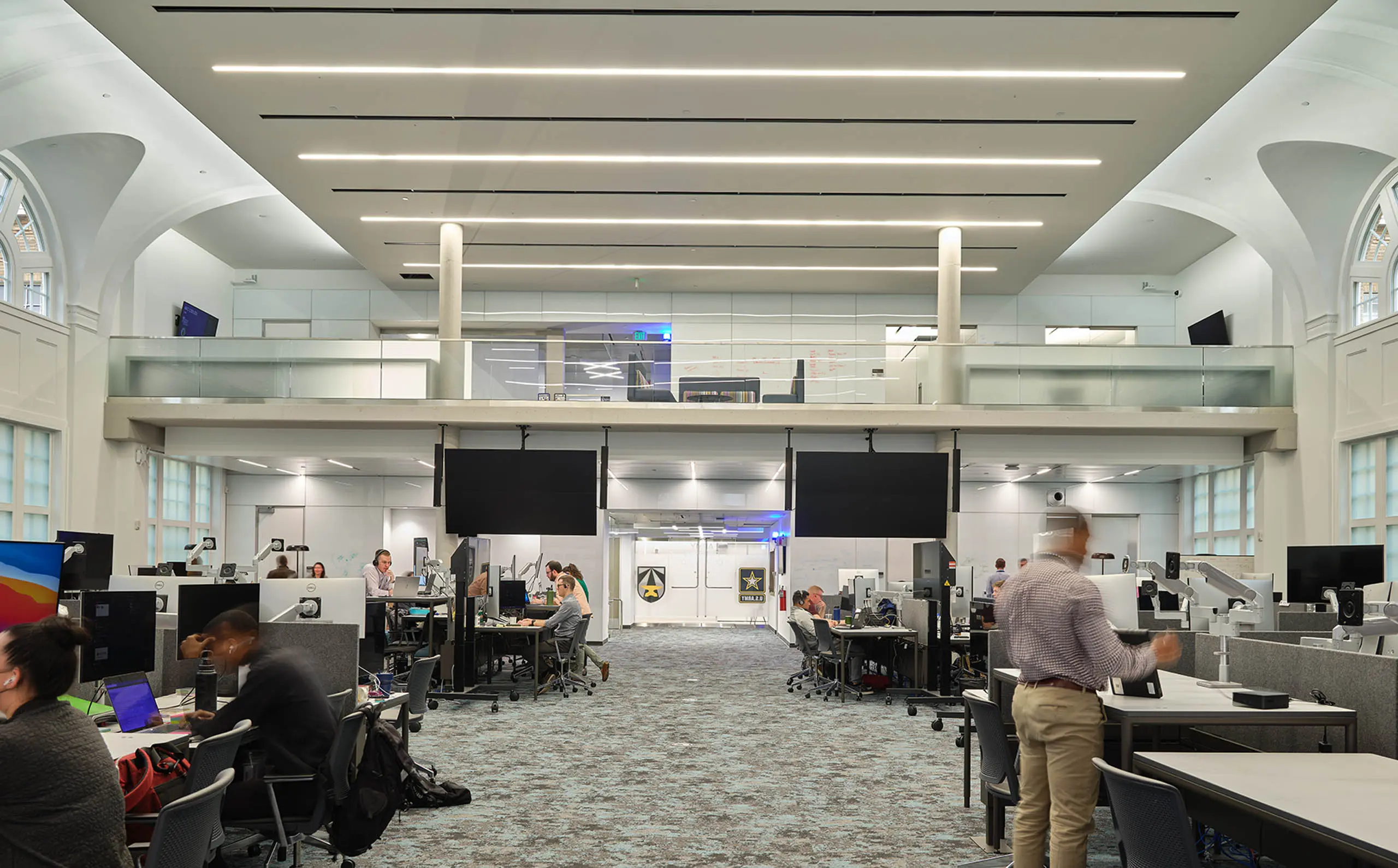
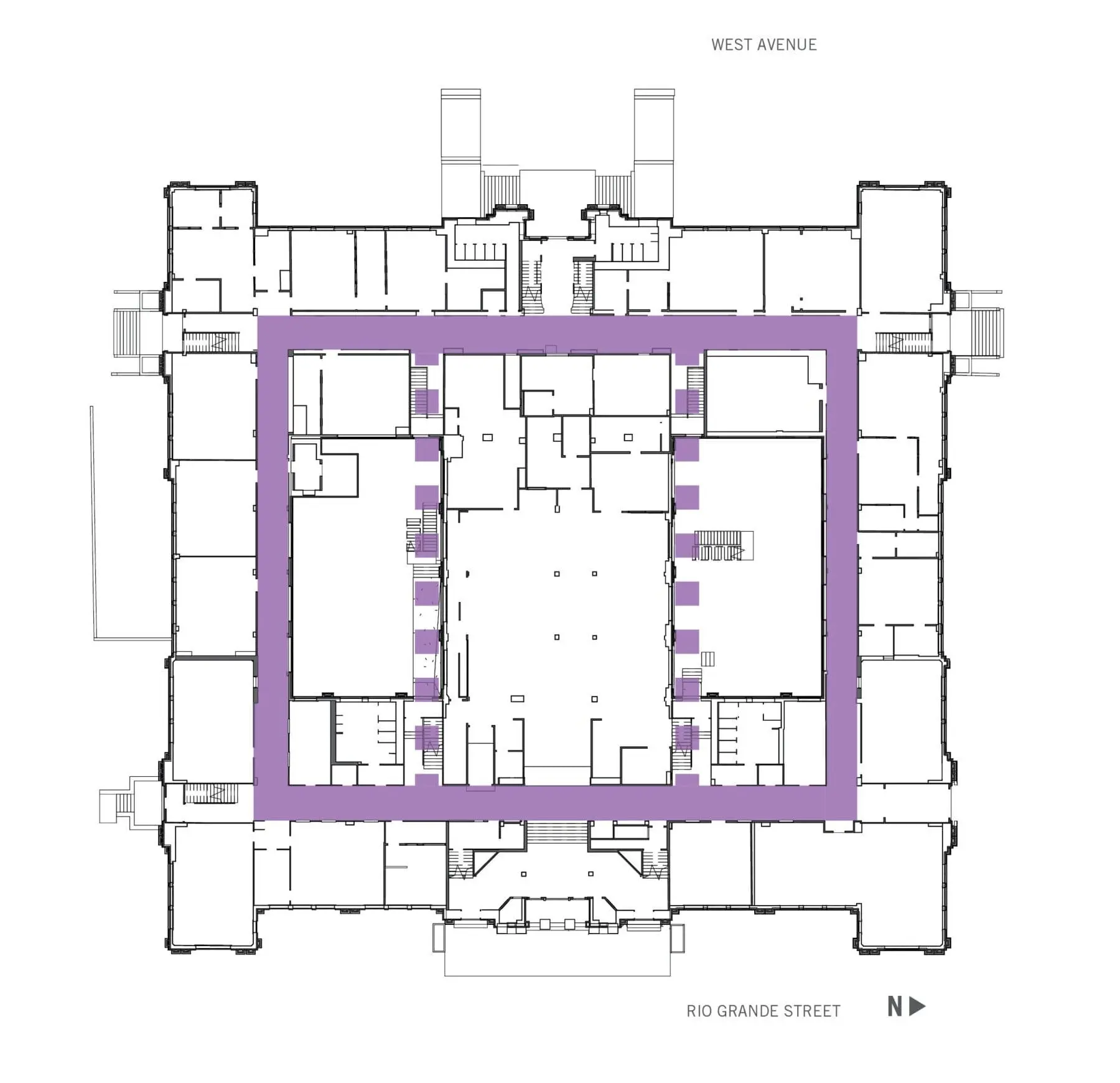
An improved circulation plan makes it possible to walk through the building between West Avenue and Rio Grande Street, a unifying path that was not possible before. The centerpiece of the campus is a vertically oriented, three-level, 168-seat ACCelerator learning lab that is integrated with the campus library.
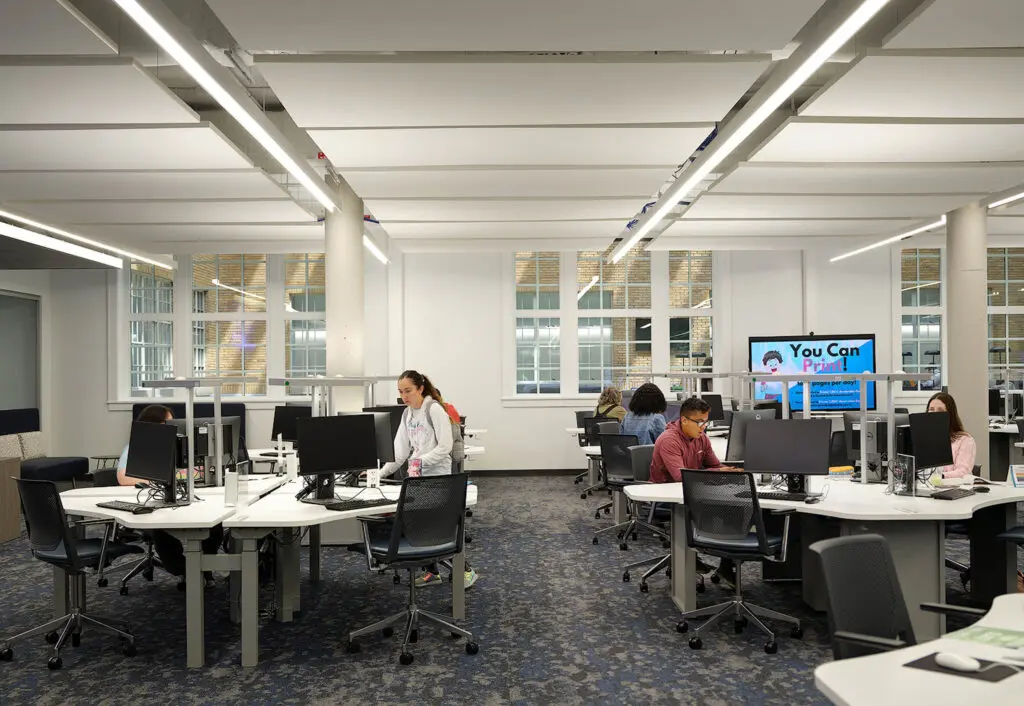
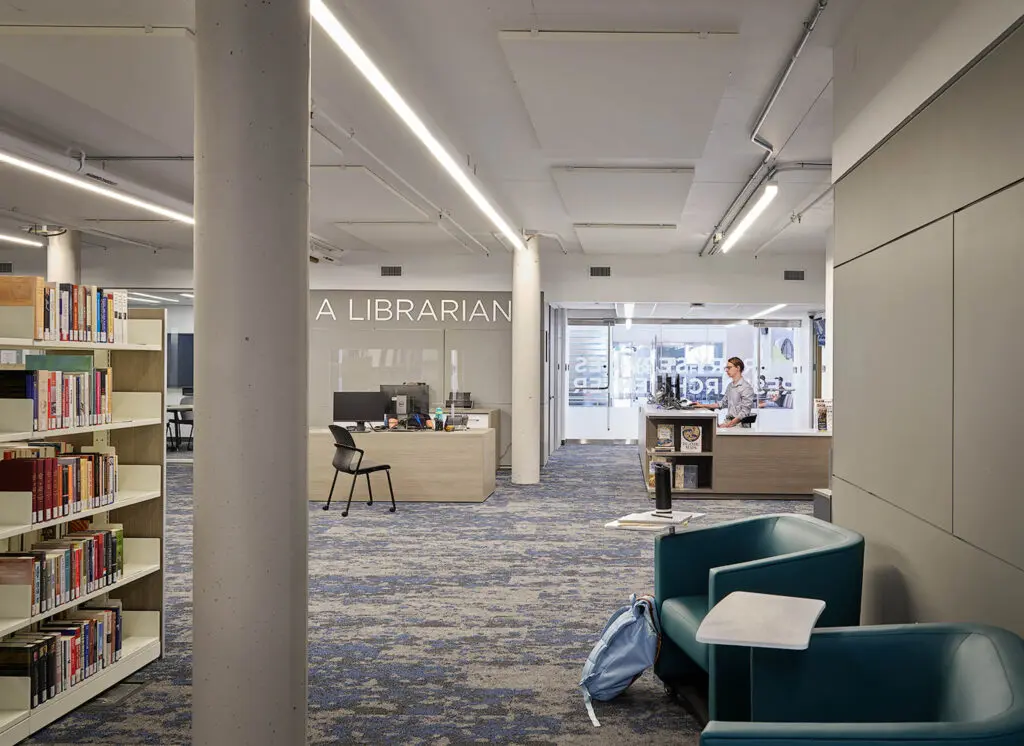
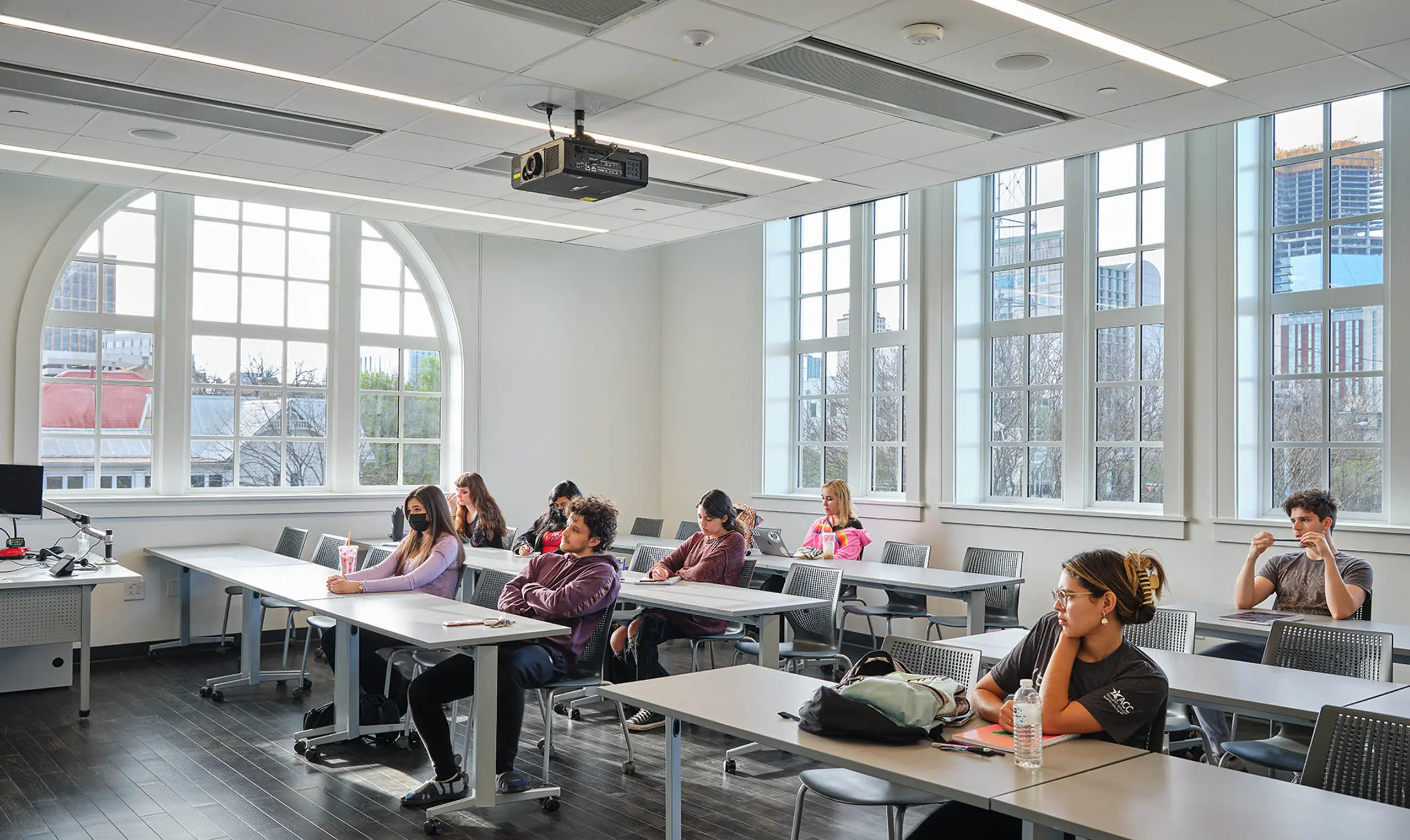
The building’s perimeter includes six science labs for physics and geology, general biology and anatomy, general and organic chemistry, as well as classrooms, offices, student services, and student life.
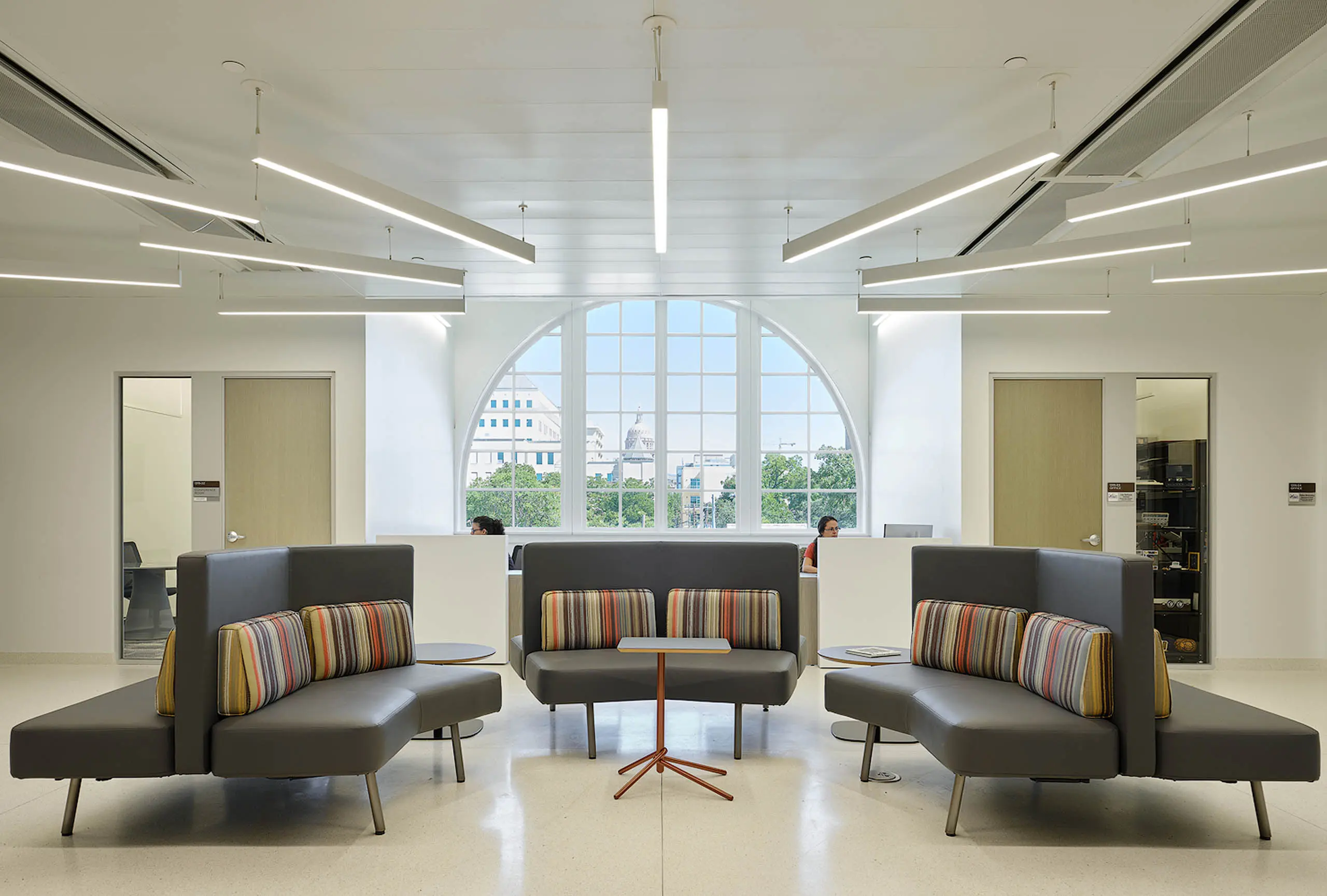
The campus now houses expanded, centralized spaces for ACC’s Deaf and Hard-of-Hearing Department, bringing all services, staff, and interpreters together in one prominent location. The design emphasizes sensory reach, mobility, light, color, and acoustics, with features like contrasting paint colors and divider curtains to enhance sign language communication, including in video conferencing and remote teaching.
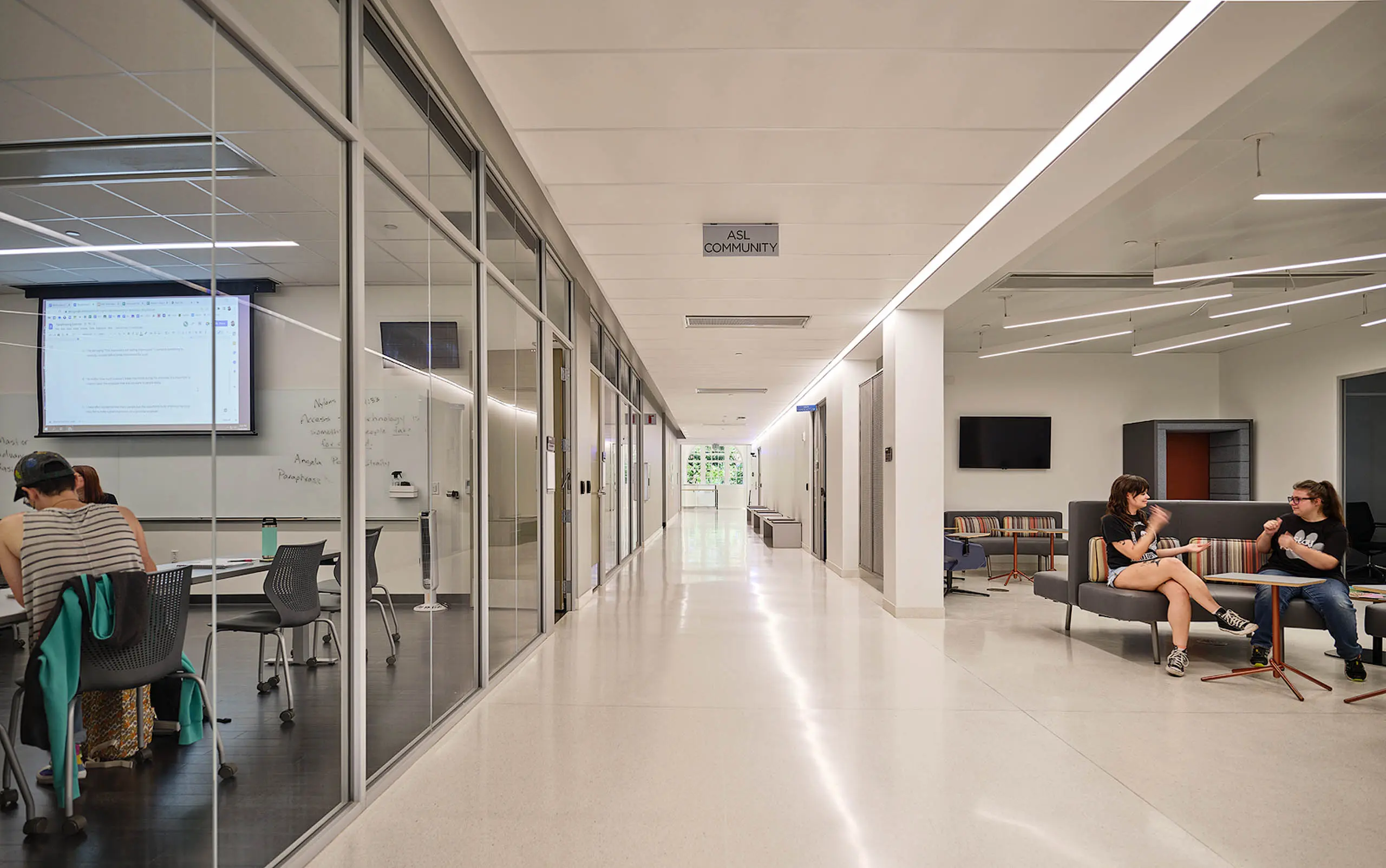
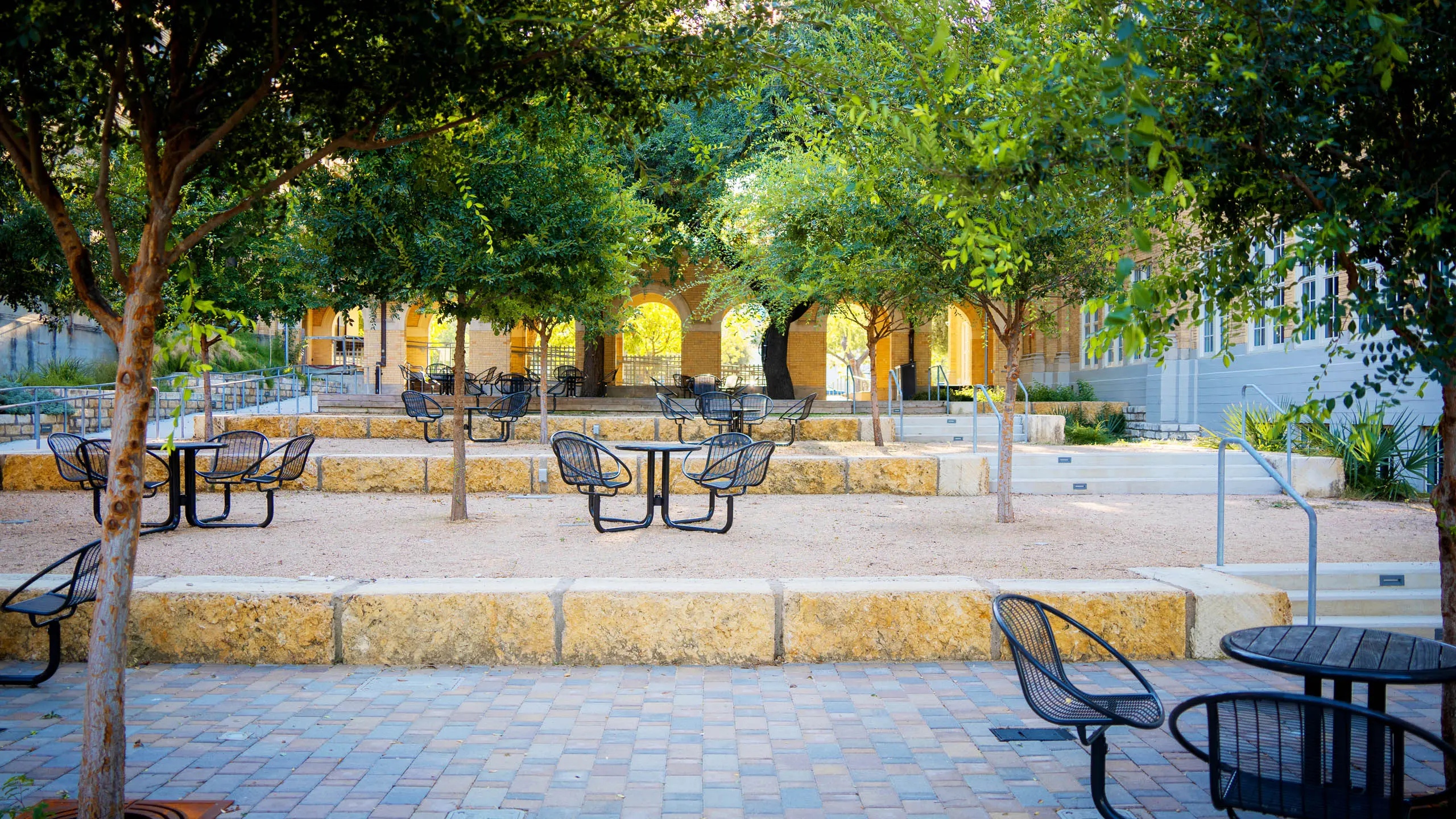
The north side’s formerly underused deck and courtyard now includes terraced seating (all trees were preserved) to create a shaded outdoor area usable even in the intense summer heat as well as a pedestrian connection between West Avenue and Rio Grande Street.
Before
After
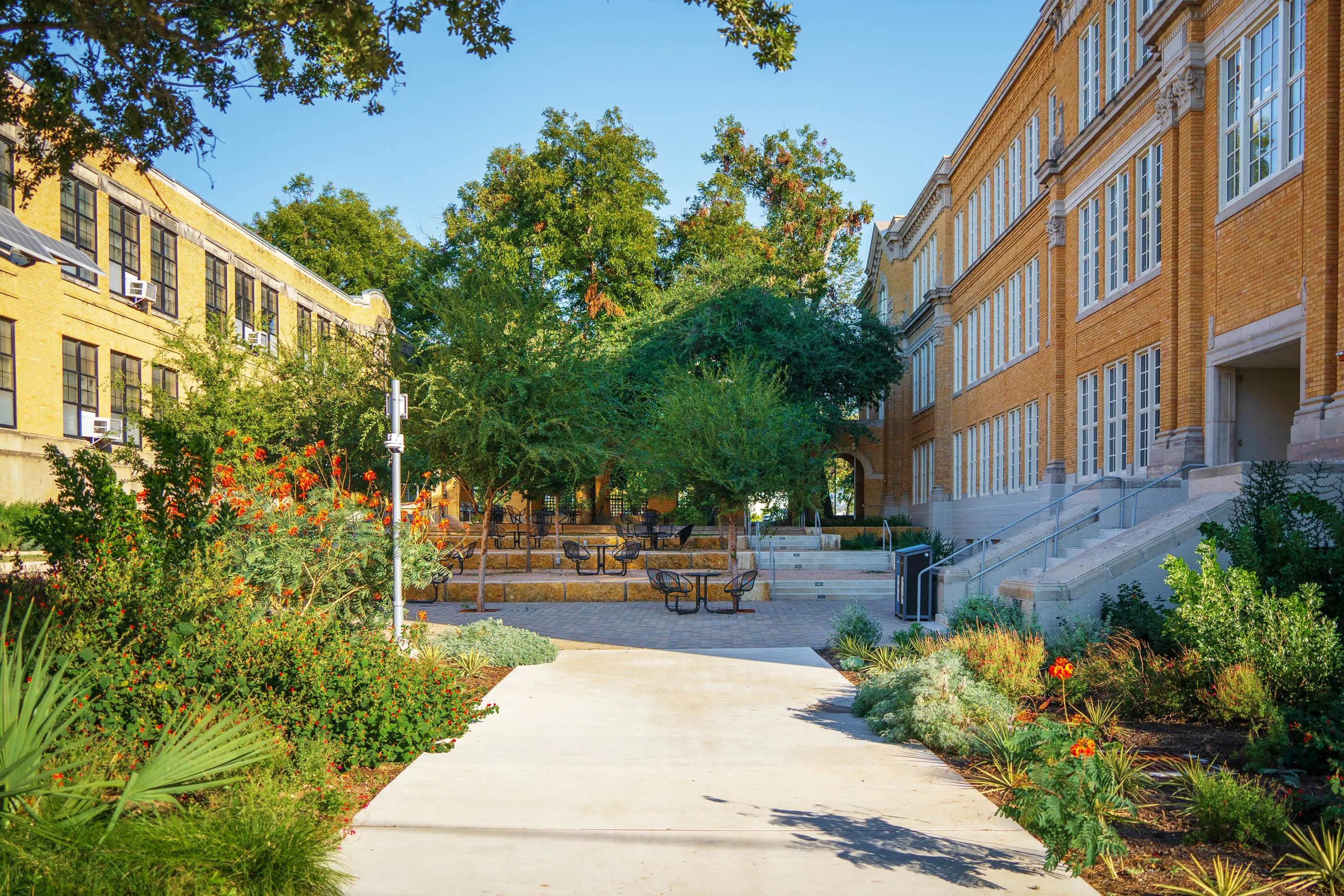
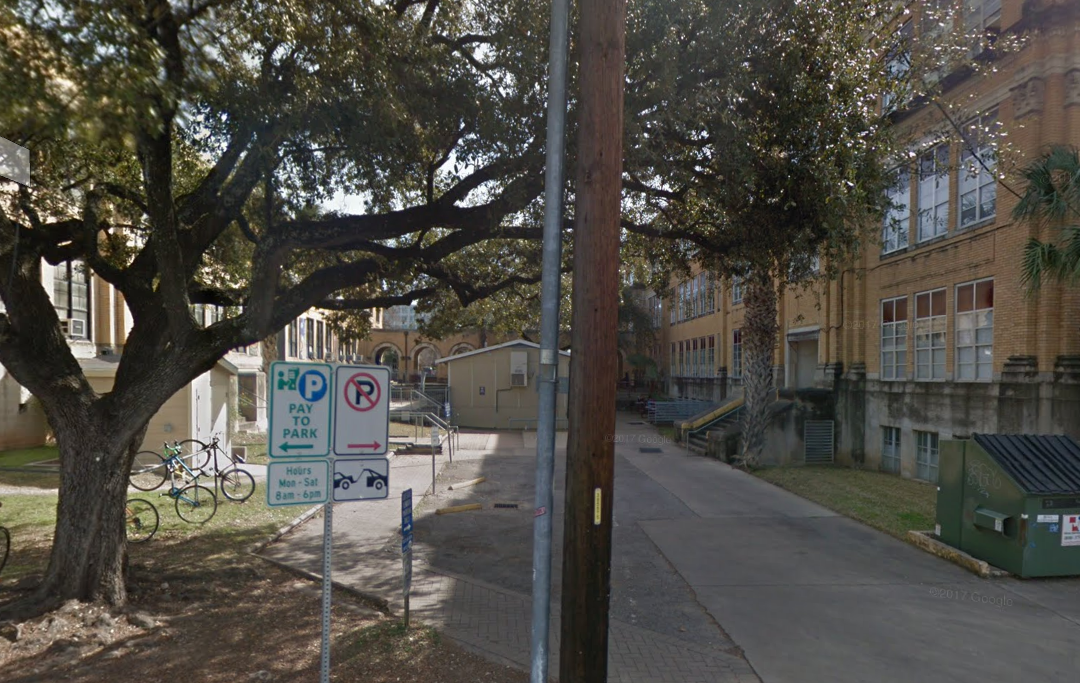

The new materials incorporate re-used, recycled and regional content as much as possible; the project reduced construction and demolition waste by at least 75 percent. A central utility plant serves the building and provides 30 percent HVAC efficiency over baseline while tapping into the City of Austin’s recycled water line (AKA “the purple pipe”) will save some 200,000 gallons—85 percent—per year. In addition, the new landscaping uses no potable water for irrigation.
Moving forward, ACC is committed to fundamental and enhanced commissioning, ensuring all its new energy-using systems are installed, balanced, and operating as designed. Permanent outdoor air delivery monitoring systems will provide valuable feedback on ventilation system performance and all densely occupied spaces will have CO2 monitors. Premium efficiency MERV 13 filtration designed to deliver cleaner air to all regular occupied spaces, and perhaps a crucial piece moving forward in a COVID-19 world, a stringent indoor air quality management plan is being adopted.
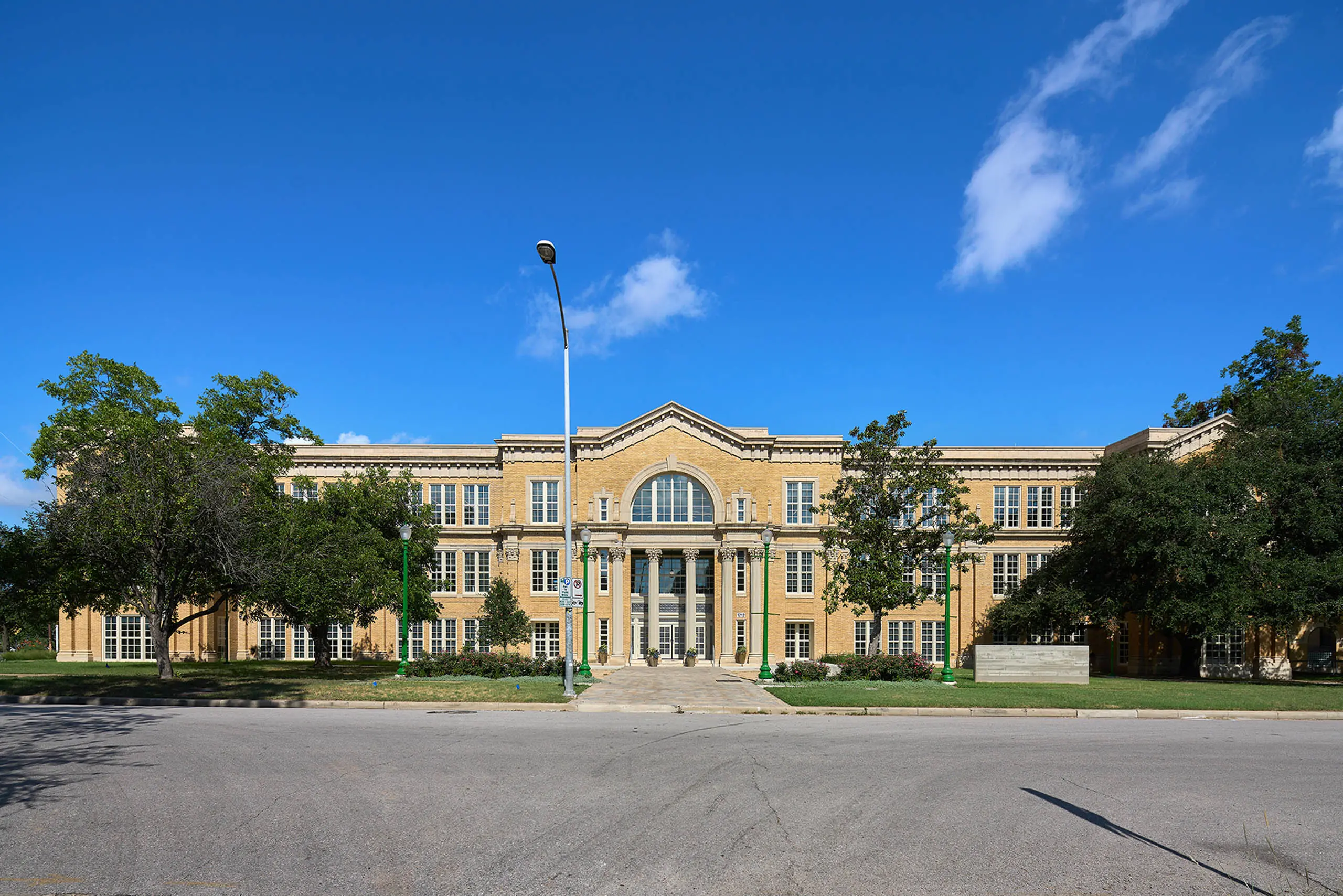
Related Projects
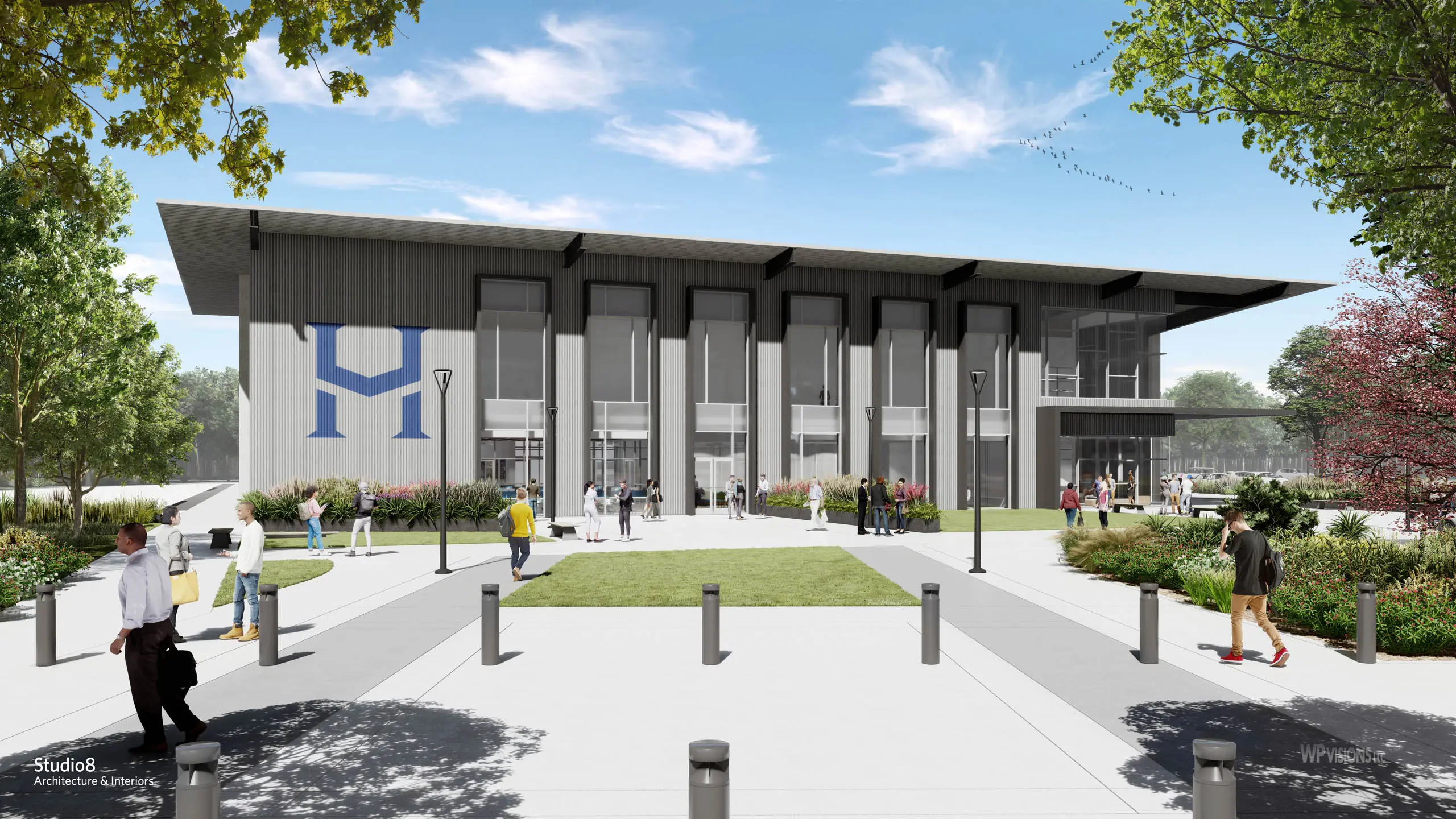
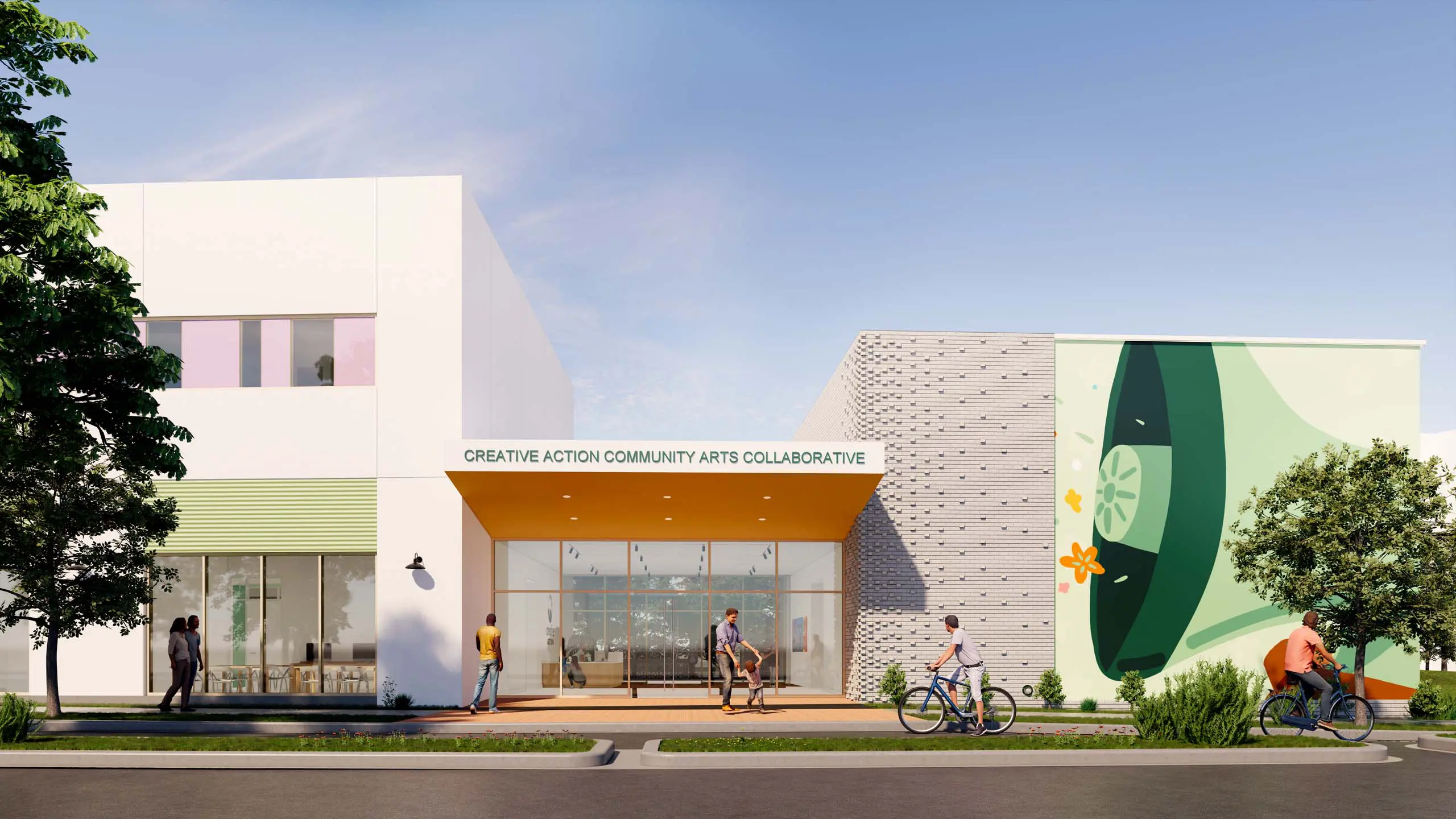
Creative Action Community Arts Collaborative
Non-Profit, Community/Recreation, In Motion, Academic

UT Austin – Microelectronics & Engineering Research Center
Science & Technology, Academic












